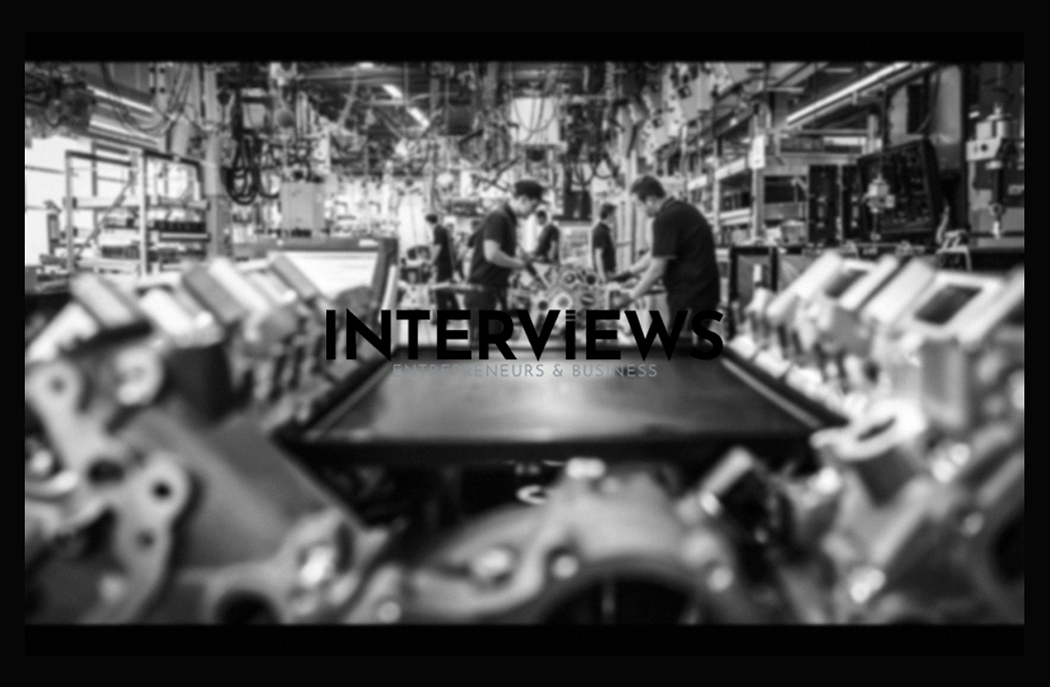Thinking of Manufacturing? Let’s Get Real About Making Things
So, you want to enter manufacturing? That’s a big step. From bioplastic packaging to wooden toys, options abound. But before excitement takes over, let’s discuss reality. Manufacturing can be profitable but isn’t easy. It requires careful planning and preparation.
Profitable Avenues in Manufacturing: Ideas to Mull Over
Searching for profitable niches? Consider these manufacturing ideas currently generating buzz:
- Bioplastic Packaging Manufacturing: Eco-friendly is no longer just a trend; it’s a necessity.
- Textile Manufacturing: The fashion industry never rests. There’s a demand for textiles beyond clothing.
- Paper Product Manufacturing: Despite digital dominance, paper retains value. Specialty papers and sustainable options exist.
- Leather Goods Manufacturing: Leather’s appeal endures. Diverse markets exist for quality leather items.
- Metal Casting: This industry supports critical components in numerous sectors.
- Ayurvedic Product Manufacturing: Natural wellness products are in high demand now.
- Wooden Toys Manufacturing: Parents prefer safe, classic wooden toys over plastic alternatives. Nostalgia matters.
- Solar Panel Manufacturing: The need for renewable energy rises. Solar panels are essential.
These inspire thought. Identifying a niche and excelling at it is vital.
Startup Costs: Buckle Up, It’s a Ride
Let’s cover costs. Starting a manufacturing business demands substantial investment. We’re not discussing pocket change. In the US, expect startup expenses between $550,000 and $1,350,000. That’s quite an investment.
Why such a broad range? It depends on what you produce, the scale, and your concept. Are you launching a micro-brewery or a car factory? There’s a vast difference.
Typically, costs fall into three areas:
- Direct Materials: These are the actual components used in production.
- Direct Labor: This includes wages and benefits for the team.
- Overhead: Essential costs like rent and utilities are often overlooked.
Remember, these are averages. Your exact figures may vary. Conduct thorough research before budgeting. Underestimating can lead to problems.
Profitability: Show Me the Money (Eventually)
You’ve invested heavily. When do profits start? Manufacturing isn’t a fast track to wealth but can yield returns. The IRS indicates manufacturing businesses average around an 8% profit margin.
Experts often aim for higher margins, suggesting about 10% to 20% as desirable. Achieving these margins requires smart management and quality products.
For context, in 2024, finance sectors like banking and tobacco showed margins nearly reaching 31%. Manufacturing operates under different conditions as it focuses on physical goods and production challenges.
From Idea to Shelf: The 7 Steps of Manufacturing Demystified
Curious about how a concept becomes a product? It typically follows seven steps:
- Concept Generation: Identify needs and brainstorm solutions.
- Product Design: Develop details about functionality and aesthetics.
- Prototyping: Create a test version, either physical or digital.
- Testing: Assess the prototype for functionality and safety.
- Production: Manufacture products in large quantities.
- Assembly: Assemble various parts if applicable.
- Packaging/Distribution: Prepare products for delivery to customers.
Each step is crucial. Neglecting one can lead to problems. Think of it like a recipe; omit an ingredient, and the result suffers.
Home Manufacturing: Making it Work From Your Kitchen (Maybe)
Can manufacturing operate from home? Surprisingly, yes in some cases. Particularly for smaller or niche products. Think of it as a modern cottage industry.
Home-based manufacturing offers flexibility and lowers overhead. However, it comes with challenges:
- Niche Products are Key: Products like candles or jewelry work well at home.
- Space is Essential: Even small operations need space for production and storage.
- Legal Hurdles: Check local regulations regarding home manufacturing.
- Safety Always: Manufacturing at home requires strict safety measures.
- Marketing is Vital: Build a strong online presence to reach customers.
- Inventory Management: Balance inventory levels to avoid stockpiling or shortages.
- Customer Service Matters: Happy customers lead to repeat business.
- Invest in Tools: Proper equipment is necessary for quality production.
- A Business Plan is Critical: Develop a clear business plan for guidance.
- Funding Needs: Home-based businesses still require capital. Know your options.
Home manufacturing is possible but demands careful thought and planning. Treat it like a business, not just a hobby.
Ease of Entry? Manufacturing: Not for the Faint of Heart
Thinking manufacturing is easy? It’s not. Jumping in unprepared can be disastrous. Serious research is essential.
The manufacturing landscape is vast. It features diverse sectors, technologies, and regulations. Enter unprepared, and competitors will surpass you.
Financial Fortitude: Your Emergency Fund Lifeline
Before focusing on production, ensure your finances are stable. Experts recommend saving six to twelve months of expenses. Why? Life is unpredictable.
This fund is especially crucial for entrepreneurs. Income can fluctuate, causing stress. Think of it as a financial cushion for tough times.
Manufacturing Titans: Giants by Revenue
Curious about leading manufacturers? Two names consistently rise to the top:
- Apple: This tech giant isn’t just software; they manufacture devices like iPhones and Macs.
- Toyota Group:The Japanese automotive leader is synonymous with quality and innovation.
- global icon.
These firms stand tall. They set standards for manufacturing excellence. Studying their methods gives you a masterclass in manufacturing. Their strategies offer insights into operational success.
Hot Products: What’s in Demand Right Now?
Curious about current manufacturing trends? IndustryNet’s recent data (March 7, 2025) shows standout products:
- Grinding (industrial grinding services)
- Adhesives (glues, sealants, bonding agents)
- Screw machine products (precision components)
- Packaging (boxes, containers, wrapping)
- Lumber (wood products)
- Pipe (plumbing, industrial piping)
- Tanks (storage solutions)
- Injection molding (plastic parts manufacturing)
These searches reflect industrial needs. Identifying trends can guide your product and market focus.
Setting Up Shop: From Idea to Industry
Ready to start your factory? Here’s a roadmap:
- Find Business Opportunities: Identify market gaps. Determine unmet needs. Spotting opportunities is your first task.
- Market Survey: Research your chosen market. Who are your customers? What do they want? Analyze competitors. Data guides your way.
- Choose Business Organization: Determine legal structure. Options include sole proprietorship, partnership, LLC, or corporation.
- Name & Registration: Create a business name. Register with authorities. Legal basics are important.
- Select Product: Decide what to manufacture. Focus on specificity.
- Finalize Location: Determine your operation site. Options include factory, warehouse, or home office.
- Identify & Understand Target Customer: Who are your customers? Know them deeply. Understanding customers is vital.
- Infrastructure Setup: Obtain necessary equipment and utilities. Build an operational foundation for manufacturing.
Launching a manufacturing operation requires careful planning and execution at every step.
Lean Manufacturing & Waste (Muda): Efficiency is Your Mantra
Waste impacts both the environment and profit in manufacturing. “Lean manufacturing” focuses on minimizing waste, or “muda” in Japanese. Watch for these seven types of waste:
- Overproduction: Creating excess inventory leads to waste. Just-in-time production is the remedy.
- Waiting: Idle time is also wasted money. Streamline processes to eliminate bottlenecks.
- Transportation: Unnecessary material movement increases costs. Optimize layouts and flows.
- Inventory: Excess raw materials or finished goods tie up capital. Lean inventory management is essential.
- Motion: Extra movements by workers cause fatigue. Focus on ergonomics and workflows.
- Overprocessing: Unneeded work adds costs without value. Serve customers’ actual needs.
- Defects: Faulty products lead to rework. Maintain strict quality controls.
To eliminate “muda,” engage in continuous improvement. Lean principles enhance efficiency and profitability.
Manufacturing Realities: Navigating the Current Climate
The US manufacturing sector faces various challenges. Growth remains elusive despite occasional gains. The Federal Reserve’s interest rate hikes in 2022-2023 further hinder progress. Higher rates can slow economic activity, affecting investments.
Stay tuned to economic trends and policies impacting manufacturing. External factors can heavily influence your business performance.
Manufacturing Flavors: Types of Production
Different manufacturing approaches exist:
- Make to Stock (MTS): Produce per expected demand. Forecast sales and build inventory. Best for standard items.
- Make to Order (MTO): Manufacture only after receiving orders. Tailor products to specific needs. Ideal for custom items.
- Make to Assemble (MTA): Combine pre-manufactured components upon order receipt. Balances flexibility and efficiency.
Your choice of manufacturing type should align with product, market, and business goals.
Manufacturing Wisdom: Key Concepts to Grasp
A few more concepts are insightful:
- Muri: This Japanese term means “overburden.” Avoid pushing teams or equipment too hard. Sustainable practices are crucial.
- 5S Pillars: Sort, Set in Order, Shine, Standardize, Sustain are key principles for workplace efficiency. Clean spaces enhance productivity.
- Job Costing: Track production costs for each item. Essential to understand profitability and appropriate pricing.
- Job Shop: A facility making custom products in small batches. Flexibility is vital in this environment.
These principles from Japanese manufacturing help enhance efficiency and improve performance.
Pre-Launch Checklist: Steps Before Launching Production
Before you launch your manufacturing business, use this checklist:
- Idea Validation and Market Research:
- Validate your idea: Confirm demand exists. Solving a real problem is crucial.
- Market research: Understand your industry and competitors thoroughly.
- Target market: Identify ideal customers. Know their needs and locations.
- Competition analysis: Study rivals’ strengths and weaknesses.
- Business Planning:
- Develop a business plan: Outline your strategy for success.
- Define business goals: Establish clear targets for growth and profitability.
- Business Structure and Legal Matters:
- Choose a business structure: Your legal structure impacts liability.
- Register your business: Official registration is mandatory.
- Licenses and permits: Obtain all necessary permissions to operate legally.
- Legal obligations: Compliance with regulations is essential.
- Funding and Finances:
- Secure funding: Determine how to finance your business.
- Financial plan: Estimate startup costs and projected revenues.
- Business accounts: Keep business finances separate from personal ones.
- Branding and Marketing:
- Choose a business name: Ensure it’s memorable and relevant.
- Brand identity: Develop a compelling logo and visuals.
- Marketing strategy: Plan how to reach potential customers effectively.
- Create a website: Establish an online presence for credibility.
- Social media: Engage with your audience through multiple channels.
- Operations and Logistics:
- Source products or services: Reliable suppliers ensure quality.
- Choose a location: Assess accessibility, costs, and zoning regulations.
- Infrastructure setup: Secure equipment necessary for operations.
- Hire employees: Assemble a capable team to support your goals.
Starting a manufacturing venture demands thorough preparation and execution. A solid plan will set you up for success. Now, go create responsibly and profitably.





